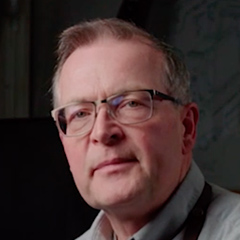
Pattern Making for Patch Panels
Bruce MacleodDescription
The art of metal forming and fabrication became relegated to a few builders creating one-off custom-built cars and a few dedicated metal masters committed to keeping the skills alive. As manufacturing processes have improved, so has the prevalence of replacement panels for classic cars, but the economics of creating new stampings often means the smaller production number cars are left unsupported with aftermarket replacement or patch panels. Thankfully, the art of pattern making and fabrication has not been lost, and a few dedicated professionals are working hard to pass these skills on to the next generation.
We join metal fabrication expert Bruce Macleod of the Contour Autocraft Academy, who demonstrates the art of making accurate patterns for fabricating repair panels. He stresses the importance of accurate pattern making before cutting into the original panels and explains how to use a compass properly to duplicate existing contours and scribe lines into metal patterns. Metal is cut away just short of the scribe line, then filed to get a close fit.
Macleod goes on to explain how to properly locate and scribe holes when pattern making, and how it’s better to have small holes in the pattern to assist in precisely placing the holes in the final panel. Bruce further explains when trimming excess metal off the pattern, it’s best to start with a rough cut, then come back and trim to the scribe line on a second pass. Macleod explains the importance when pattern making to write detailed placement information on the pattern itself, to ensure proper placement when building the final panel.
Finally, with the knowledge Bruce has shared in flat and flanged pattern making, he demonstrates how to build a pattern for a double-contoured panel, using paper to replicate the contours of the surface and transferring it to metal.